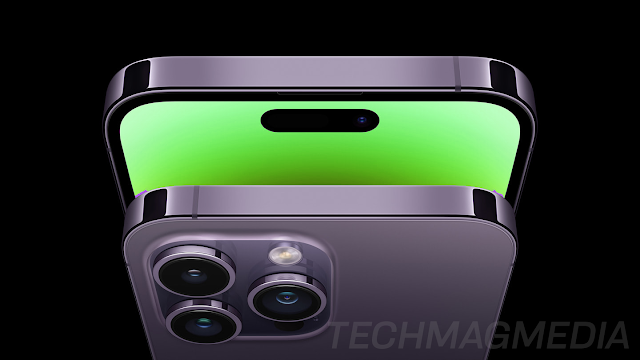Introduction
Blockchain technology is one of the most exciting things
happening in the world right now. It’s a way to secure information, build
trust, and make transactions between two parties easy and efficient. But what
exactly is blockchain? And how does it work? In this guide we'll walk through
everything you need to know about this new way of doing business—from what
makes it so powerful to how you can use it today!
The ultimate guide to blockchain technology
Blockchain technology is simply a digital ledger that is used for the recording of transactions. The blockchain is a distributed ledger, meaning it doesn't
have one central authority like a bank or government that keeps track of who
owns what and when. Instead, the information about each transaction gets stored
in different places across the network so no one person or group has control
over all of it.
Blockchain is also decentralized because there’s no central
point where all transactions get logged — instead they're stored on computers
belonging to different parties (called nodes) around the world. This makes it
harder for anyone trying to hack into your system because they would need
access not just to your device but also everyone else's devices as well!
Blockchain explained: it builds trust when you
need it most
Blockchain is a new technology that builds trust when you
need it most.
Blockchain is a distributed ledger, which means it’s
distributed among many different computers. This makes the network more secure
and robust than one centralized database would be, because if any one computer
goes down or gets hacked, then all of the information stored on that particular
computer can still be accessed by other computers within the system.
Blockchain uses cryptography to secure transactions between
parties involved in an exchange (e.g., buying goods from a marketplace). The
blockchain uses cryptography so that only authorized users have access to
specific data in your transaction ledger; anyone who tries hacking into this
type of network will have their efforts disrupted immediately by its security
measures—and if they do succeed at breaking through those measures successfully
enough times over time periods totaling more than half of what we call an hour
right now (the bitcoin block chain keeps track of every single bitcoin transaction
ever made), then they'll eventually lose access entirely once someone else
finds them out!
It’s not just about bitcoin
Blockchain technology isn’t just about bitcoin. The
cryptography that underpins blockchain has the potential to be used in many different
ways, and it will likely have an impact on your everyday life.
Blockchain can be used to secure data such as financial
transactions or medical records, and it can also be used to create new kinds of
digital currencies that don't exist yet (see below).
Blockchain 101: the tech that makes
cryptocurrency work
Blockchain is a type of database that can be shared across
multiple sites. It’s a distributed ledger technology, which means that all the
information stored in a blockchain is kept in one place and updated
simultaneously.
The blockchain database isn't stored on any single computer;
instead, it's spread out across thousands or millions of computers around the
world. These computers are known as nodes and together they form an
ever-growing list (known as blocks) containing data from previous transactions
on the network—all linked together with cryptographic hashes to ensure security
and ensure no one person or entity has control over who can see what
information at any time during its lifespan
How secure is blockchain technology?
The reasons why blockchain technology is secure are many and
varied. Here are the four most important ones:
● Decentralization means that no one
single entity holds all of the data or controls it in any way, which makes it
difficult for a hacker to gain access.
● The data on a blockchain is encrypted
so that only authorized users can view it. This makes it difficult for hackers
to steal information from your computer or phone if you're using an online
wallet service like Coinbase (more on those later).
● Blockchains are replicated across
many nodes worldwide, which means there will always be someone who knows what
happened before anyone else did—and this includes both users and miners/nodes
themselves! No individual person or party has complete control over their own
copy of every transaction ever made within its network; instead, every
participant maintains multiple copies at once while watching out for changes
made by others in order to prevent tampering with existing records without
detection by any other member present."
What is a smart contract?
A smart contract is a piece of code that can execute the
terms of a contract. It's like a vending machine, but it accepts and executes
payments in cryptocurrency. The terms of your contract can be written in any
programming language (like Solidity), making it easy to access and customize
how you want your smart contracts to operate.
Smart contracts are used for tracking fulfillment of
agreements, or enforcing them through automated processes like payment
transfers or automatic execution based on certain conditions being met. Smart
contracts also offer benefits beyond traditional legal documents: they're
faster, cheaper, more secure than traditional agreements because they're
programmed into digital code instead of paper documents; moreover there’s no
need for lawyers when things go wrong because there are no human biases
involved – only objective facts about what happened (or didn't happen!).
What is a blockchain fork?
A blockchain fork happens when there is a disagreement about
the rules that govern the blockchain. For example, Bitcoin was created as an
open-source project by its developers and community, who agreed on certain
rules in order to make sure everyone could participate. However, if someone
wanted to change those rules or even create new ones altogether (for example:
"Bitcoin will now only be used for performing illegal business
transactions"), they would need support from other users before they could
do so - and this might not always happen quickly enough for them.
If enough people agree with this change then it becomes
permanent; however if there isn't enough support then it becomes temporary
until another consensus can be reached
Blockchains can do more than just secure
bitcoin.
Blockchains can be used for many things, including tracking
the movement of assets.
Blockchain is a distributed ledger that's shared among many
different parties. The blockchain database is maintained by a network of
computers across the globe (hence the name "distributed"), and each
computer on that network has access to all previous transactions in the
chain—meaning no one person or entity can modify data without being noticed by
other users on their own local copies of the system. This makes blockchains ideal
for ensuring data hasn't been tampered with or otherwise compromised; because
it's decentralized and stored in multiple locations around the world, it
becomes nearly impossible for hackers to change what was entered into it before
entering theirs into theirs too while they were identical entries!
Conclusion
We hope you’re as excited about blockchain technology as we
are! It’s an exciting time to be part of the digital world, and it will only
get better from here. So what are we waiting for? Let’s get started with our
next lesson on how a blockchain works...






0 Comments